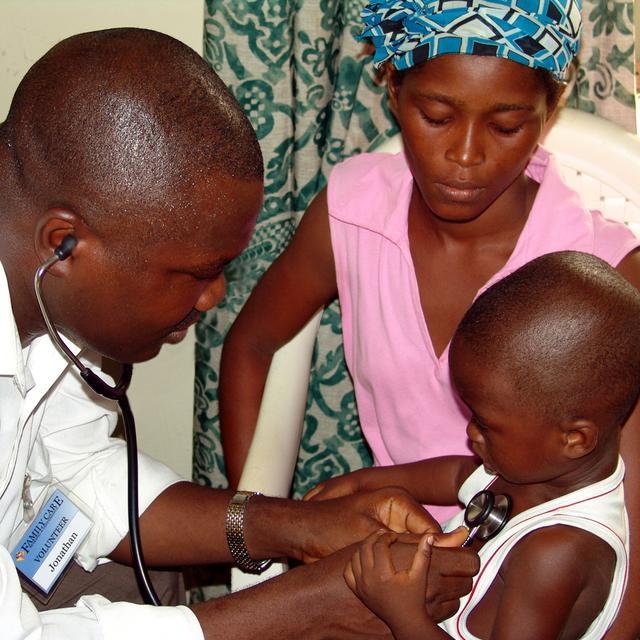With a rapidly increasing population, the global demand for food is expected to increase by 50-80% by 2050. Growing this food will be an immense challenge, especially in Africa.
Faced with a growing population, little new land available for agriculture, decreasing plot sizes, ageing farmers, urban migration and depleted natural resources, Africa’s agricultural systems need to be transformed, environmental degradation reversed, policies and governance improved, and better access to markets established for small farmers.
More than 70% of people affected by food insecurity in Africa live in rural areas. The root cause of food insecurity is the inability of people to gain access to food due to poverty. The majority of Africans depend on small-scale farming systems for their livelihoods, but the agriculture sector in Africa is underdeveloped, with soils that are exhausted and few funds available to purchase fertilisers.
In sub-Saharan Africa, 95% of the food that is grown relies on rain as a water source, making it extremely vulnerable to drought. This is a major challenge as climate change is expected to result in more frequent and severe floods and droughts, and more pests and diseases.
Access to markets is another major hurdle for smallholder production, affected by poor infrastructure and the limited resources of farmers, lack of market information and inadequate government institutions. Poverty, gender inequality, inadequate education and poor health among smallholder farming families, also limit their ability to increase the productivity and profitability of their farms.
One innovation of integrating trees with agriculture, crops and livestock, is significantly increasing livelihoods, food security and environmental stability. This practice, called agroforestry, offers a positive way to achieve major gains in poverty reduction and food production.
More than 30% of the world’s cocoa supply comes from Côte d’Ivoire, and with global cocoa demand increasing at around 2% each year, there is enormous potential for smallholder farmers to increase their incomes. But over the last decade, cocoa production has been declining because of depleted soils, ageing trees, pests and diseases, and changing weather.
The chocolate company Mars joined together with the World Agroforestry Centre, local farmers, government and civil society organisations to improve productivity in the cocoa sector in Côte d’Ivoire. The programme focused on the trees, providing farmers with high quality saplings, rehabilitating ageing cocoa farms, and providing farmers with the skills and tools to adopt modern, environmentally sustainable agricultural practices. Today, 150,000 farmers have increased their cocoa yields by an average of around 400 kg to 1,500 kg per hectare or more from their healthy trees.
Another example of using trees in a new way is in Niger, one of the poorest countries in the world. The rapidly increasing population there forced the clearing of a vast, ancient forest during the 1960s and ’70s. But the dense underground root system remained, and for many years, instead of clearing their fields prior to planting crops, hundreds of thousands of farmers are now allowing some of the trees to grow, protecting their crops from wind and sun, drawing up water from the deep reservoirs and increasing the fertility of the soil. With crops now growing in a verdant parkland, cereal yields have increased by an average of 100 kg per hectare, contributing enough extra food to satisfy the needs of an additional 2.5 million people.
Besides greater cereal crop yields, the trees provide fuel wood and sellable wood, adding significantly to farmers’ incomes. Many also provide edible leaves, fruits and nuts as well as fodder for livestock.
Food security is not just about access to food, but also depends on a supply of nutritious food. Nine of the 20 nations with the highest burden of children malnourished are found in sub-Saharan Africa. The average consumption of fruit and vegetables in this region is well below the minimum recommended daily intake. To address this in Cameroon, scientists and farmers have been working together to bring a range of valuable indigenous fruit trees into cultivation. The income this provides and the nutrition gained from the fruit is increasing health, improving livelihoods and reducing migration to the cities as the young people stay in villages to earn a living from the new tree farming activities.
Increasing the productivity of Africa’s agricultural systems without further degrading the environment is one of the most significant challenges facing global agriculture. Using trees to develop a new agriculture is offering one answer. Yet there remains an urgent need for these types of technologies to be financed, scaled-up and supported by sound policies and good governance.
Kate Langford is the communications officer for the International Centre for Research in Agroforestry (ICRAF) of the World Agroforestry Centre.



